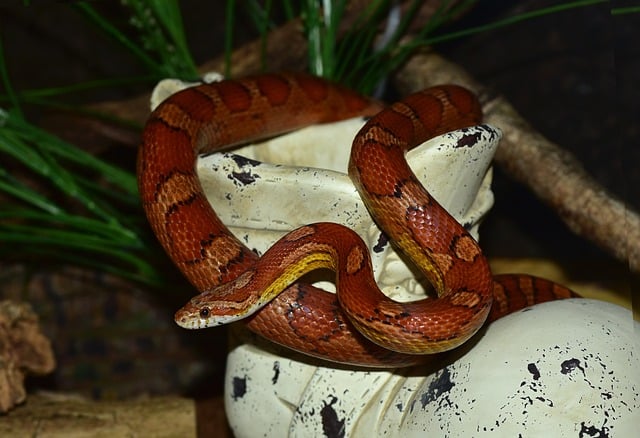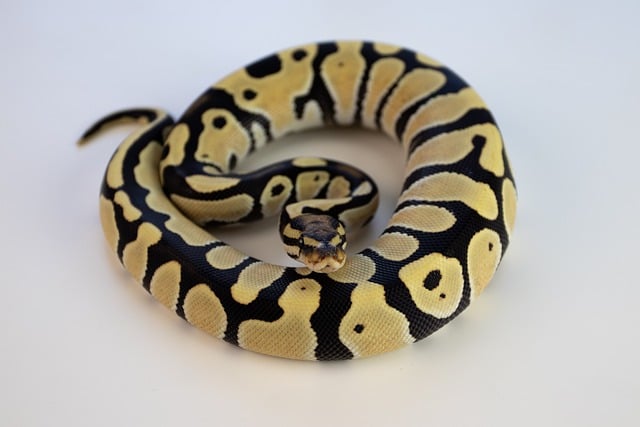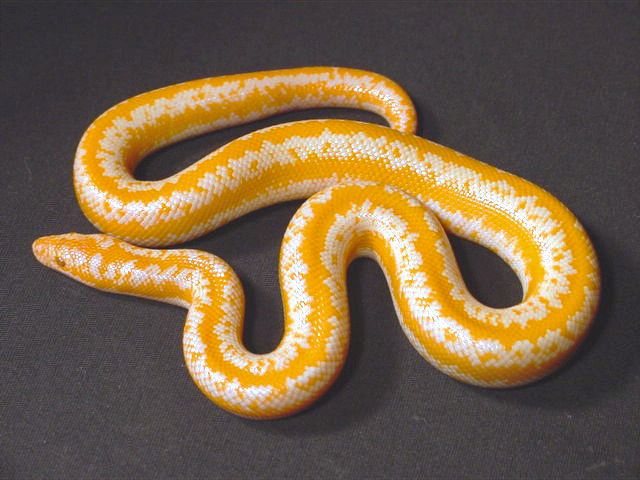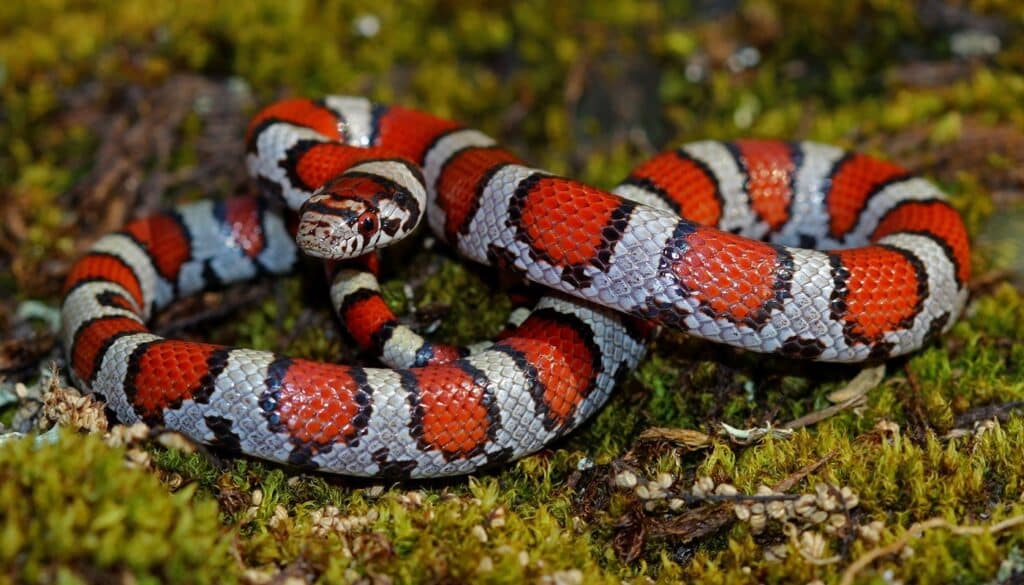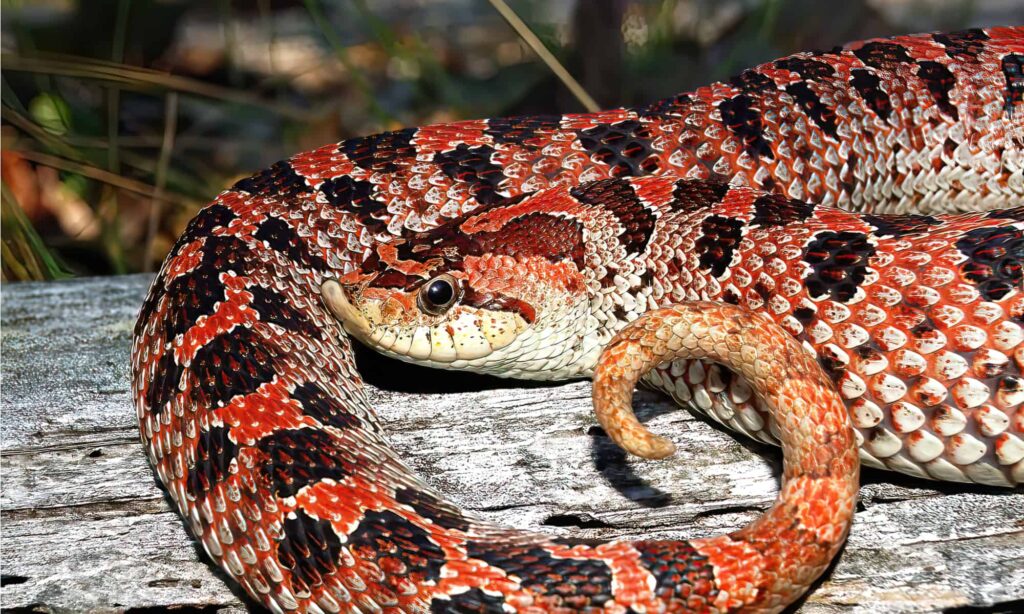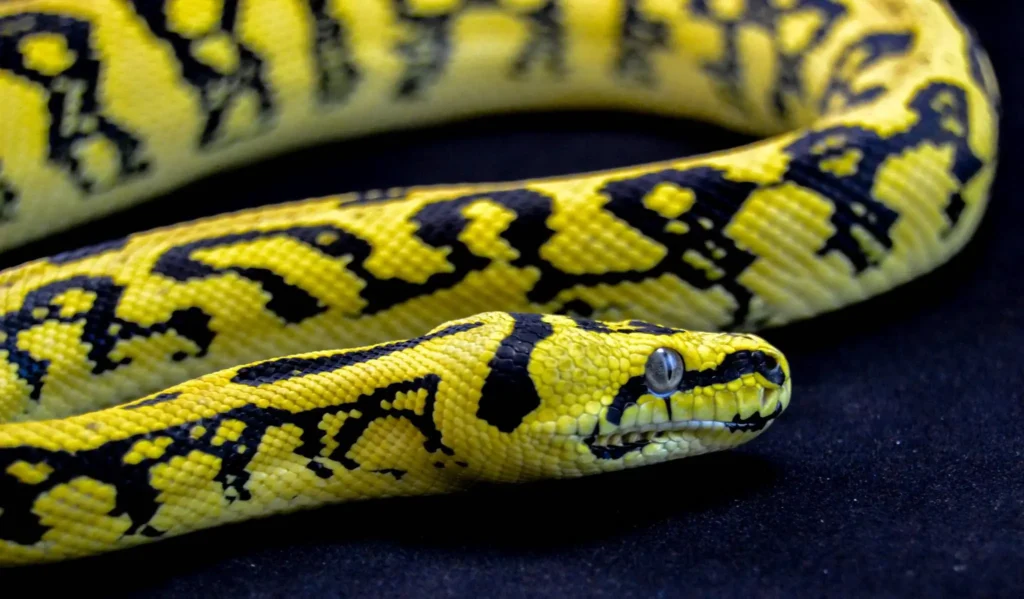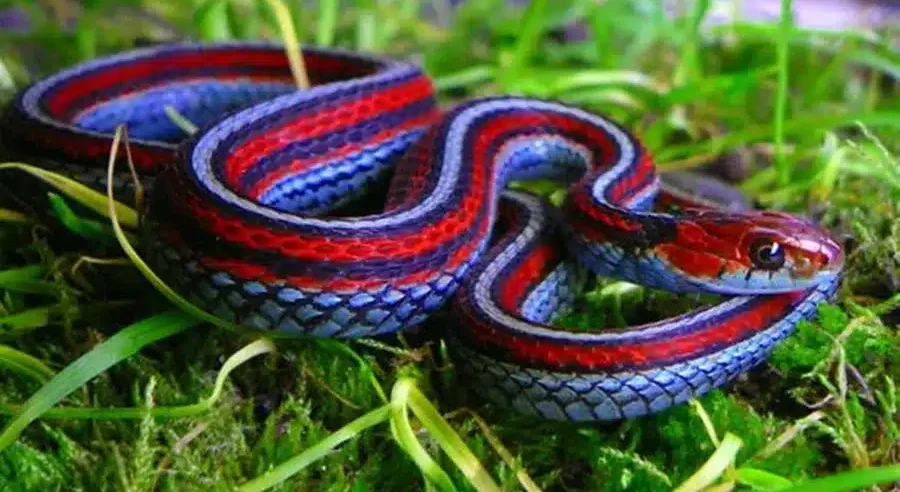Are you thinking about getting a pet snake? You’re in the right place! In this article, we’ll break down the top 10 best pet snakes for all levels of experience. We’ll understand what makes these snakes great pets and look into factors that every snake owner should consider when making their decision. Let’s get started!
Here are the top 10 Sss-spectacular pet snakes:
1. Corn Snake
Corn snakes come in a wide variety of colors and patterns, derived from years of selective breeding. Some notable morphs include the Amelanistic, Anerythristic, and Caramel varieties. The name “corn snake” originated from the pattern on their belly, which looks similar to Indian corn.
- Beginner-friendly
- Available in various colors
- Great temperament
- Size: 2-5 feet
2. Ball Python
Named for their tendency to curl into a tight ball when scared or stressed, Ball Pythons are another ideal starter snake. With their relatively small size and gentle nature, these cool creeps make great, easy-to-handle companions.
Ball pythons have beautiful and intricate patterns that differ between individuals, lending them a unique appearance. Breeders have managed to create over 6,500 different color and pattern combinations called morphs.
- Excellent for beginners
- Medium Sized
- Docile and gentle
- Size: 2-6 feet
3. California Kingsnake
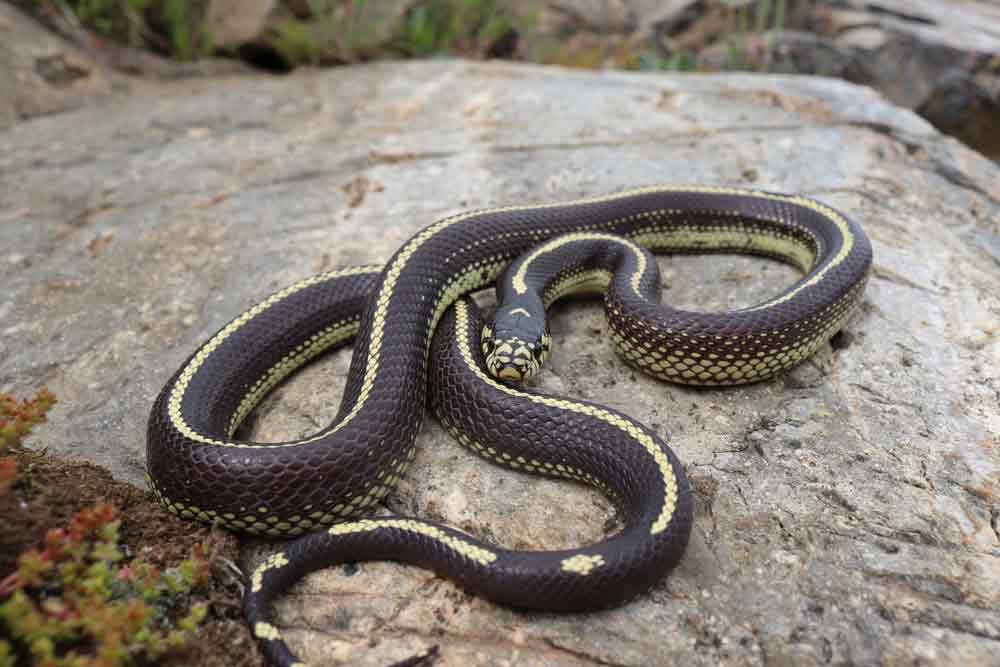
This elegant snake features a black, brown, or grey background with white or cream-colored bands. The distinct band patterns may vary between individuals, and some morphs even have longitudinal stripes.
- Low maintenance
- Good for new snake owners
- Hardiness and adaptability
- Size: 3-4 feet
4. Gopher Snake
Gopher snakes are native to the western United States. Sporting earthy tones, Gopher snakes have a ground color that ranges from cream-yellow to tan and dark brown. Their marking pattern is blotched with darker saddles, and they resemble rattlesnakes (but don’t worry, they are non-venomous).
- Beginner-friendly
- Interesting behaviors
- Relatively docile
- Size: 3-6 feet
5. Rosy Boa
These friendly critters, native to the southwestern United States and Mexico, are perfect for those new to snake ownership. Rosy boas are named for their rosy, or pinkish hue, found on some of their patterns.
They exhibit three longitudinal stripes that can be orange, brown, or maroon, with yellow, cream, or grey backgrounds. Their smooth skin is often described as feeling like a soft, modern plush toy!
- Great for beginners
- Mild temperament
- Smooth skin texture
- Size: 2-3 feet
6. Milk Snake
These vibrant beauties are tri-colored and exhibit red, white to light yellow, and black bands. With around 24 subspecies, milk snakes have a wide range of appearances, including some whose patterns resemble the venomous coral snake.
- Comes in vibrant colors
- Easy to handle
- Good for new owners
- Size: 2-5 feet
7. Hognose Snake
Hognose snakes are characterized by their unmistakable upturned snouts, which they use for digging in the soil. They come in an array of patterns and colors including brownish-grey, olive green, and creamsicle (an orange morph). Add to that their gentle nature and easy manageability, and they make great pets.
- Unique appearance
- Docile and easy to handle
- Mildly venomous (not dangerous to humans)
- Size: 1-3 feet
8. Carpet Python
Native to Australia, Carpet Pythons are not for the faint-hearted and are more suitable for those with some experience in handling snakes.
Their beautiful pattern is reminiscent of an ornate, well, carpet! They display a higher level of intelligence and curiosity than many other snake species. Carpet Python morphs exhibit a variety of intricate patterns in a multitude of colors.
- Beautifully patterned
- Active and engaging
- Suited for experienced owners
- Size: 6-10 feet
9. San Francisco Garter Snake
One of the smallest species of pet snakes, the Garter Snake is a crowd-pleaser. Garter snakes are thin and small, measuring around 1 to 2 feet in length. They have unique color patterns that include longitudinal stripes and lateral lines, which come in a variety of colors like red, yellow, green, or blue.
- Vivid stripe patterns
- Highly adaptable
- Perfect for novices
- Size: 1-3 feet
10. Kenyan Sand Boa
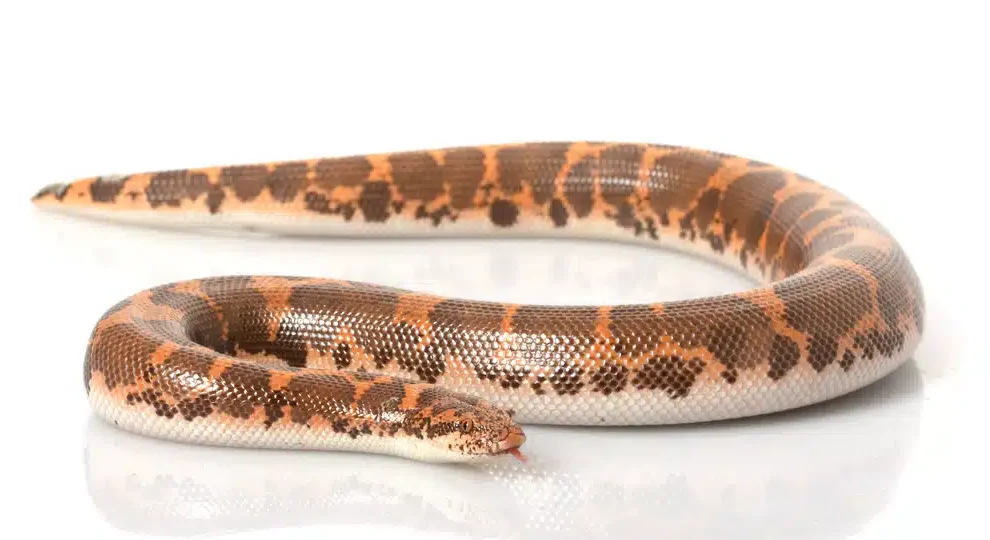
These adorable little snakes are small and stout, featuring a rounded shovel-like snout and beady eyes. Their coloration typically consists of dark brown spots on a tan background, mimicking their natural habitat of sandy African deserts
With their beady little eyes and adorable faces, these snakes are hard to resist. Their low climbing behavior also means you do not need a very tall habitat for them.
- Unique color pattern and smooth skin
- Calm and easy to manage
- Ideal for new owners
- Size: 1.5-2 feet
Are any one of these snakes venomous?
Out of the top 10 pet snakes mentioned earlier, only the Hognose Snake is mildly venomous. However, it is important to clarify the difference between venomous and poisonous snakes. Venomous snakes deliver toxins through their bite or sting, while poisonous organisms release toxins when ingested. With this distinction, it’s accurate to say that none of the snakes in our list are considered poisonous.
In summary, among the top 10 pet snakes, only the Hognose Snake is venomous, but its venom isn’t dangerous to humans
Is it legal to keep snakes as pets?
The laws regarding keeping snakes as pets vary greatly depending on the location. Some places allow the keeping of non-venomous snakes, while others may have size or species restrictions, or even be completely against pet snake ownership1. Before getting a snake, it’s essential to check the specific regulations in your area, including local, state or even national laws.
Do Snakes make a good pet?
Snakes can indeed make great pets, and they’re especially popular among individuals who appreciate their unique behavior and appearance. They’re known to be relatively low-maintenance compared to other pets. They don’t require daily feeding, are quiet, and need surprisingly little space per their body size. But it’s key to understand that each snake species has its own care requirements and temperament.
Do pet snakes bite?
The truth is, all animals with teeth can bite, and pet snakes are no different. That said, most pet snake species are known for their docile nature. Bites are infrequent, typically occur when the snake is stressed, and are usually minimal in harm.
Things you need to know before getting a pet snake
Finally, while snakes can make fascinating and rewarding pets, there are a few things you should know:
Snake Lifespan: Snakes can live for many years, so getting a snake is a long-term commitment.
Feeding Requirements: Most snakes are carnivorous. The majority of pet snakes are fed a diet that consists mainly of rodents, which you may need to keep frozen and then warm up for feeding time.
Habitat: It is crucial to establish a suitable habitat for your snake. This requires temperature control and may need a specific level of humidity.
In summary, while owning a snake can be enjoyable and gratifying, owning one comes with responsibilities and considerations. Before taking the step of adopting a pet snake, ensure you’re ready to meet these needs!


